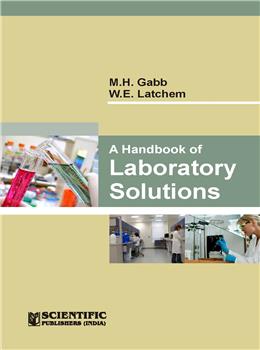

The book provides a concise and handy reference guide to the numerous recipes for the making up of chemical solutions used in laboratories. It is intended for the laboratory worker in industry and in research as well as in teaching institutions. The majority of bench solution are common to chemistry, biology and other laboratories. To avoid duplication, the reader is cross-referred from one section to another, for instructions on the making up of such solutions. The book has been divided into chapters in which preparation of one particular use, or related uses are grouped together alphabetically. Where appropriate the uses of the solution are stated and cross-reference made. The comprehensive index includes both the names and uses of the solutions covered, and a list of further references is provided. It is hoped that the book will be useful to teaching institutions at UG/PG level, Laboratory worker in Industries as well as those involved in research.
1. Solutions - Basic Definitions : Molar and Normal Solutions, Standard Solutions, The Ourity of Chemical Substances.
2. Solutions - Handling Techniques : Clean Apparatus, Measuring or Graduated Apparatus, The Pipette. The Burette. Making a Solution of Approximate Concentration. Making Standard Solutions by Weighing, Standardization of Solutions by Titration. Cleaning Solutions.
3. Solutions for Titrations : Primary Standards - 1: Standardization of strong Acids. 2: Standardization of Alkaline Solutions. 3.: standardization of Oxidizing Agents. 4: Precipitation Reactions. 5: Iodine Titrations.
Acids and Alkalis.
Solutions for Redox Reactions - 1: Oxidizing Agents or Oxidants. 2: Reducing Agents.
Miscellaneous Titration Solutions.
4. Bench Solutions: Acids. Alkalis. Other Inorganic Reagents.
5. Indicators : Acid-base or pH Indicators. Screened Indicators. Mixed Indicators. Water-soluble Indicators. Other pH Indicators. Luminescent Indicators. Universal Indicators. Buffer Solutions, Indicators for Precipitation Titrations. Adsorption Indicators. Starch Indicator for Iodine Titration. Indicators for Redox (Oxidation-reduction) Reactions. Titrimetric or Volumetric Indicators. Indicators for EDTA Titrations.
6. Organic Reagents and others used in Qualitative Analysis.
7. Reagents used in Organic Chemistry.
8. Biochemical Solutions and Reagents.
9. Solutions in Histology.
10. Physiological Salines and Culture Solutions
Physiological Salines - Animal. Plant Culture Solutions.
11. Miscellaneous Solutions : Solutions for Making Indicator Papers. Electrolyte Solutions for Cells and Electrolysis.
Maximum Tolerances in Graduated Glassware
Atomic Weight Table
Simple first Aid Procedures